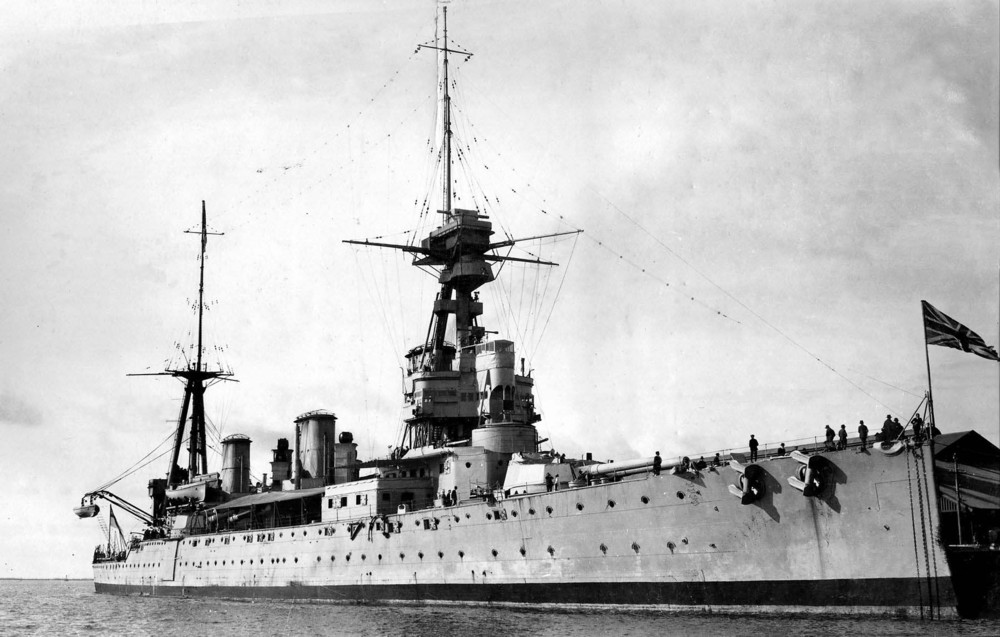The two Australis Indefatigable class battlecruisers differed from their British counterparts by having the same layout as the Neptune class battleships. With a fore turret, two opposed center turrets and two superfiring aft turrets, where the British units did not have the superfiring aft turret. This added thirty five feet to the length of the hull and improved the length/breadth ratio. These ships went through 2 major refits as the navy decided on whether to keep the ships past 1933 or discard/scrap them. The Royal Navy had started a rebuilding program called the Area Defence Vessel where the early Dreadnoughts were converted to training ships with aircraft handling facilities with large amounts of hangar space. The large hangars could be split into either dormitories or barracks. One for trainee seaman, cadets, or midshipmen, the other being for troops or marines.

HMS Indefatigable in the Royal Navy designed four turret version, the Australis version had a superfiring aft turret in the same layout as its Neptune class battleships.

The first refit these ships received in 1925 demilitarised them somewhat (into training ships) to allow them to no longer count against Australis' battleship tonnage. The centre turrets were removed and replaced with a shelter deck covering that area for the trainees. The engines were converted to oil firing, the forward boiler room and funnel were removed, which reduce the speed to 20 knots. The bridge superstructure was rebuilt. A pair of catapults for aircraft were placed either side of the ship between the remaining funnels.

The second rebuilding for the Tasmania was more extensive and began in 1933 and finished in 1935. Large hangars and aircraft handling facilities were fitted. The chance was taken to replace the ships engines and boilers with a reduced set from the original 50,000shp to a refurbished 30,000shp set (engines from the Iron Dukes and new boilers). This brought the speed back to 23 knots and allowed the ship to act as a heavy escort to the escort carriers if required. Enhanced anti-aircraft armament was fitted.


Rare view of Invincible and Indefatigable - both sunk at Jutland May 1916.
The aim for the ADV ships was for them to provide base facilities in the Island groups under Australis protectorate status, with air reconnaissance being available from the onboard aircraft and also from any long range flying boats that were based on the ship. The big guns gave considerable coverage to the harbour while the AA guns provided the harbours AA defence. The longer and faster converted battlecruisers could be used as heavy escorts on occasions when required.
The Manawatu was converted along different lines to the Tasmania. Where the Tasmania had needed to be re-engined and re-boilered in its 1930's refits, the Manawatu kept its full 50,000shp engines and boilers throughout its life. Why? Because it had had a much quieter war than the Tasmania. Searching for raiders in the Indian Ocean 1914-15, Gallipoli and Mediterranean service 1915-17. Returned to Australis waters 1918. While it was used as a training ship through to 1934, the ship only had the P and Q turrets removed, the other improvements made to the Tasmania were not put aboard the Manawatu. The Australis Navy had its eye on converting the Manawatu to an Aircraft Carrier. Converting the Manawatu would give them a much more useful ship than the Tasmania as an ADV. It was the Tasmania's engine/boiler situation that decided the Australis Admiralty against converting the ship also to an aircraft carrier.

HMAS Manawatu at Adelaide 1929. First signs of training ship duties appearing beside the bridge structure.
